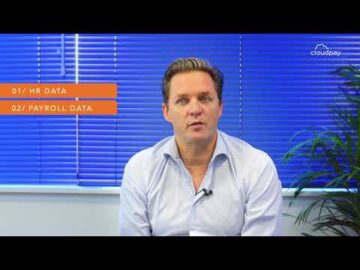How to Calculate Yield to Maturity: 9 Steps with Pictures
Bookkeeping
How to Calculate Yield to Maturity: 9 Steps with Pictures

For example, suppose that investors become more willing to hold bonds due to economic uncertainty. Then bond prices would likely rise, which would spike the denominator in the yield to maturity formula, thereby reducing the yield. Yield to maturity (YTM) is the total return anticipated on a bond if it is held until maturity. It represents the average annual return earned by an investor who purchases a bond at its current market price and holds it until maturity, collecting all interest and principal payments due.

Being able to do a rough calculation will help you decide if holding or selling is your best move. The bond yield definition is the same as the current yield on financial security. The bond yield is the overall return an investor gains from the investment. The bond yield can also be matched to the current coupon rate when determining the bond yield itself. Calculating yield to maturity involves working backwards from the current price of the bond to see what its approximate yield is in the current market. Investors can use the yield-to-maturity calculation to compare bonds with different maturity terms.
Conclusion and Other Financial Basics Calculators
YTM is an annualized rate that assumes an investor holds a bond to maturity if it is purchased at its current market price. This provides a standardized yield that can then allow comparisons across different fixed-income investments of various types. Using YTM, one could, for instance, compare the relative attractiveness of bonds from different issuers, among coupon and zero-coupon bonds, and those with different maturity.
Before we talk about the bond YTM (yield to maturity) calculation, we must first understand what a bond is; only then you can understand what yield to maturity is. A bond is a financial instrument that governments and companies issue to get debt funding from the public. Investopedia does not provide tax, investment, or financial services and advice. The information is presented without consideration of the investment objectives, risk tolerance, or financial circumstances of any specific investor and might not be suitable for all investors. Investing involves risk, including the possible loss of principal.
Coupon rate is the annual interest you will receive by investing in the bond, and frequency is the number of times you will receive it in a year. The bond price is the money an investor has to pay to acquire the bond. As bonds are a particular investment, their precise evaluation is crucial in the eyes of investors. The most apparent aspect of the assessment is whether money is made or lost on the investment, that is, what the return on the financial transaction is. To an individual bond investor, the coupon payment is the source of profit.
How do I calculate the yield to maturity of a bond?
The rate of return is based on the stream of future coupon payments, the eventual return of principal, and the initial purchase price. To determine yield to maturity, you need to know the face value of the bond, the price of the bond, the annual coupon rate (yield), and the number of years to maturity. The yield to maturity is expressed as a percentage that may or may not differ from the coupon depending on whether the bond was purchased at a discount to face value. The YTM is merely a snapshot of the return on a bond because coupon payments cannot always be reinvested at the same interest rate. As interest rates rise, the YTM will increase; as interest rates fall, the YTM will decrease. Yield to Maturity (YTM) – otherwise referred to as redemption or book yield – is the speculative rate of return or interest rate of a fixed-rate security, such as a bond.
However, it is important to note that YTM has its limitations, such as assuming a constant interest rate, ignoring reinvestment risk, and credit risk. Ultimately, investors should use YTM as a tool, alongside other factors such as creditworthiness and market conditions, to make informed investment decisions. YTM assumes that all coupon payments are reinvested at the same rate until the bond matures and that the bond issuer will fulfil its obligation to pay both interest and principal at maturity. However, YTM is a theoretical calculation and does not account for factors such as changes in interest rates or credit risk that may affect the actual return of a bond investment. Bond YTM takes into account the bond’s coupon rate, the purchase price of the bond, the time remaining until maturity, and the face value of the bond.
What Is a Bond’s Yield to Maturity?
However, changes in interest rates will cause the market value of the bond to change as buyers and sellers find the yield offered more or less attractive under new interest rate conditions. In this way, yield and bond price are inversely proportional and move in opposite directions. As a result the yield to maturity of the bond will fluctuate, while the coupon rate for a previously existing bond will remain the same. It assumes that the buyer of the bond will hold it until its maturity date, and will reinvest each interest payment at the same interest rate.
Best Bond ETFs for Aussie Investors – Forbes Advisor Australia – Forbes
Best Bond ETFs for Aussie Investors – Forbes Advisor Australia.
Posted: Thu, 13 Jul 2023 07:00:00 GMT [source]
If you’ve already tested the calculator, you know the actual yield to maturity on our bond is 11.359%. For this particular problem, interestingly, we start with an estimate before building the actual answer. That’s right – the actual formula for internal rate of return requires us to converge onto a solution; it doesn’t allow us to isolate a variable and solve. The page also includes the approximate yield to maturity formula, and includes a discussion on how to find – or approach – the exact yield to maturity. However, the benefits related to comparability tend to outweigh the drawbacks, which explains the widespread usage of YTM across the debt markets and fixed-income investors.
Bond Yield to Maturity Calculator
Since z-bonds are a common type of debt issuance by certain organizations, including some U.S. Treasury securities, yield to maturity is an important consideration. Instead of paying coupons, z-bonds are typically issued at a cornerstone connector with work opportunity tax credit discount in the market and then mature to their face value. Here, we look at how to estimate the YTM of a bond that does not pay regular interest. While the coupon rate of a bond is fixed, the par or face value may change.
- Some bonds may be recorded to pay interest more than once per year.
- Doug is a Chartered Alternative Investment Analyst who spent more than 20 years as a derivatives market maker and asset manager before “reincarnating” as a financial media professional a decade ago.
- We have written this article to help you understand the meaning of YTM, how to calculate it using the YTM equation, and the factors that cause YTM to rise and fall.
Frequently, the coupon rate and required return don’t match in the subsequent months and years because events impact the interest rate environment. To the bond trader, there is the potential gain or loss generated by variations in the bond’s market price. The yield to maturity calculation incorporates the potential gains or losses generated by those market price changes.
Variations of YTM
For example, a bond with a market price of $7,000 that pays $70 per year would have a current yield of 7%. Two common yields that investors look at are current yield and yield to maturity. Current yield is a snapshot of the bond’s annual rate of return, while yield to maturity looks at the bond over its term from the date of purchase. Yield to Maturity (YTM) for a bond is the total return, interest plus capital gain, obtained from a bond held to maturity. It is expressed as a percentage and tells investors what their return on investment will be if they purchase the bond and hold on to it until the bond issuer pays them back.
- In this example, the par value of the bond is $100, but it is priced below the par value at $95.92, meaning the bond is priced at a discount.
- YTM is the total return a bond investor will expect if it is held to maturity.
- They are usually tax-exempt if the investor lives in the state where the bond was issued.
- Once an investor has determined the YTM of a bond they are considering buying, the investor can compare the YTM with the required yield to determine if the bond is a good buy.
- The information is presented without consideration of the investment objectives, risk tolerance, or financial circumstances of any specific investor and might not be suitable for all investors.
Yield to maturity is an essential investing concept used to compare bonds of different coupons and times until maturity. Without accounting for any interest payments, zero-coupon bonds always demonstrate yields to maturity equal to their normal rates of return. The yield to maturity for zero-coupon bonds is also known as the spot rate. When a new bond is issued, the interest rate it pays is called the coupon rate, which is the fixed annual payment expressed as a percentage of the face value. For example, a 5% coupon bond pays $50 a year interest on each $1,000 of face value, a 6% coupon bond pays $60 and so forth. That’s what the issuer will pay — no more, no less — for the life of the bond.
Solving the equation by hand requires an understanding of the relationship between a bond’s price and its yield, as well as the different types of bond prices. When the bond is priced at par, the bond’s interest rate is equal to its coupon rate. If a bond holder sells the bond prior to its maturity date, the yield to maturity on that investment may vary from the amount that would have been realized if it had been held to the maturity date. Zero-coupon bonds (z-bonds), however, do not have reoccurring interest payments, which distinguishes YTM calculations from bonds with a coupon rate. In conclusion, Yield to Maturity (YTM) is an important measure for investors to consider when analysing bond investments. It takes into account all future cash flows and provides a comprehensive estimate of expected return, facilitating comparison between different bonds.
Form 424B2 CITIGROUP INC – StreetInsider.com
Form 424B2 CITIGROUP INC.
Posted: Wed, 02 Aug 2023 17:51:42 GMT [source]
Before discussing the YTM calculation, we must first understand what a bond is. When the YTM is less than the (expected) yield of another investment, one might be tempted to swap the investments. Then, we must calculate the number of compounding periods by multiplying the number of years to maturity by the number of payments made per year. Alternatively, this process can be sped up by utilizing the SOLVER function in Excel, which determines a value based on conditions that can be set. This means that an analyst can set the present value (price) of the security and solve for the YTM which acts as the interest rate for the PV calculation.

